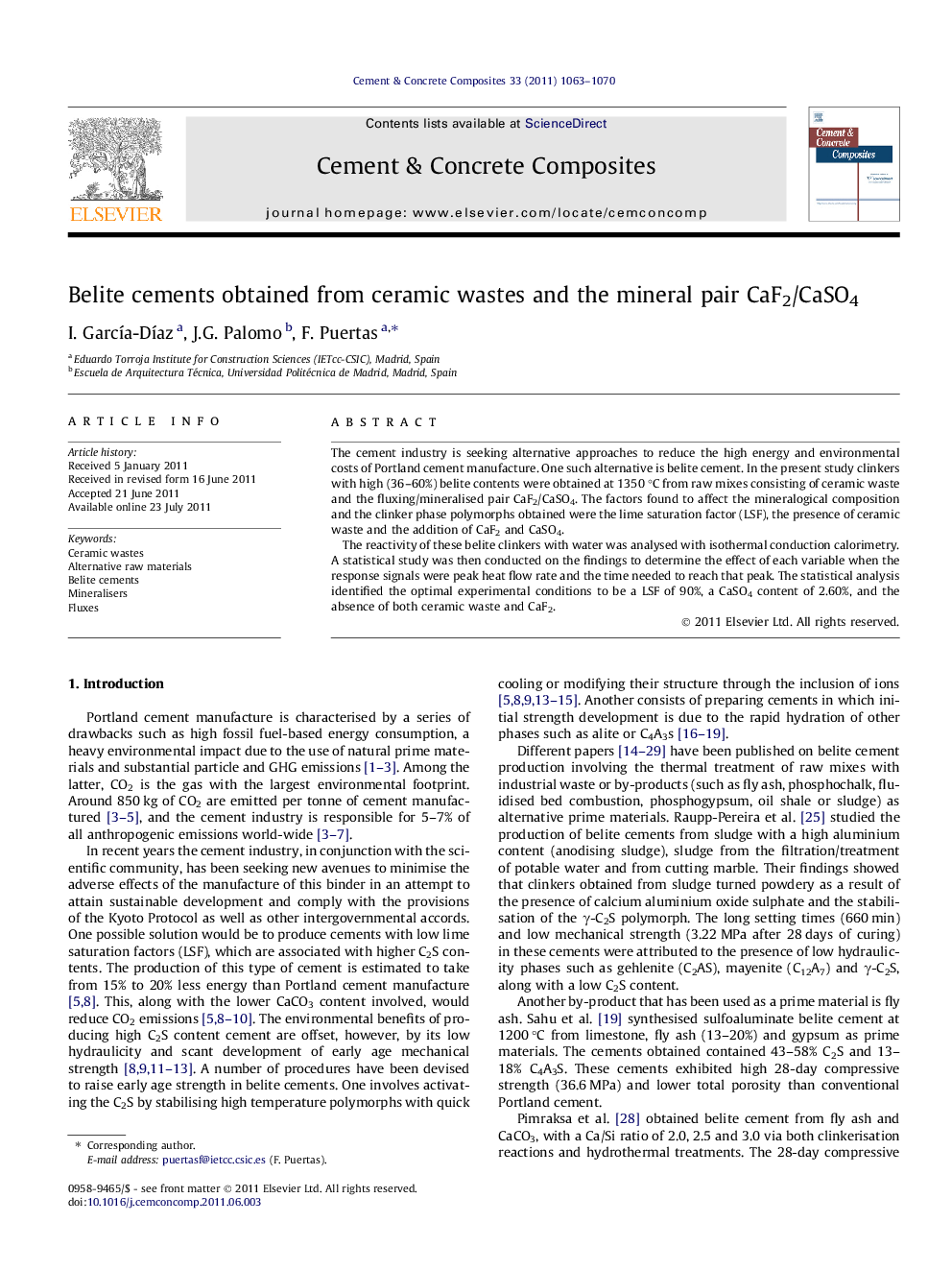| Article ID | Journal | Published Year | Pages | File Type |
|---|---|---|---|---|
| 1455287 | Cement and Concrete Composites | 2011 | 8 Pages |
The cement industry is seeking alternative approaches to reduce the high energy and environmental costs of Portland cement manufacture. One such alternative is belite cement. In the present study clinkers with high (36–60%) belite contents were obtained at 1350 °C from raw mixes consisting of ceramic waste and the fluxing/mineralised pair CaF2/CaSO4. The factors found to affect the mineralogical composition and the clinker phase polymorphs obtained were the lime saturation factor (LSF), the presence of ceramic waste and the addition of CaF2 and CaSO4.The reactivity of these belite clinkers with water was analysed with isothermal conduction calorimetry. A statistical study was then conducted on the findings to determine the effect of each variable when the response signals were peak heat flow rate and the time needed to reach that peak. The statistical analysis identified the optimal experimental conditions to be a LSF of 90%, a CaSO4 content of 2.60%, and the absence of both ceramic waste and CaF2.
► Belite clinkers can be obtained from raw mixes containing ceramic waste and the pair CaF2/CaSO4. ► The highest percentages of C2S were observed in clinkers obtained from ceramic waste and 3.90% CaSO4. ► The presence of ceramic waste in the raw mix favours the stabilisation of the αH′-C2S polymorph. ► CaSO4 stabilises β-C2S, inhibiting the stabilising effect of ceramic waste on the αH′-C2S.
